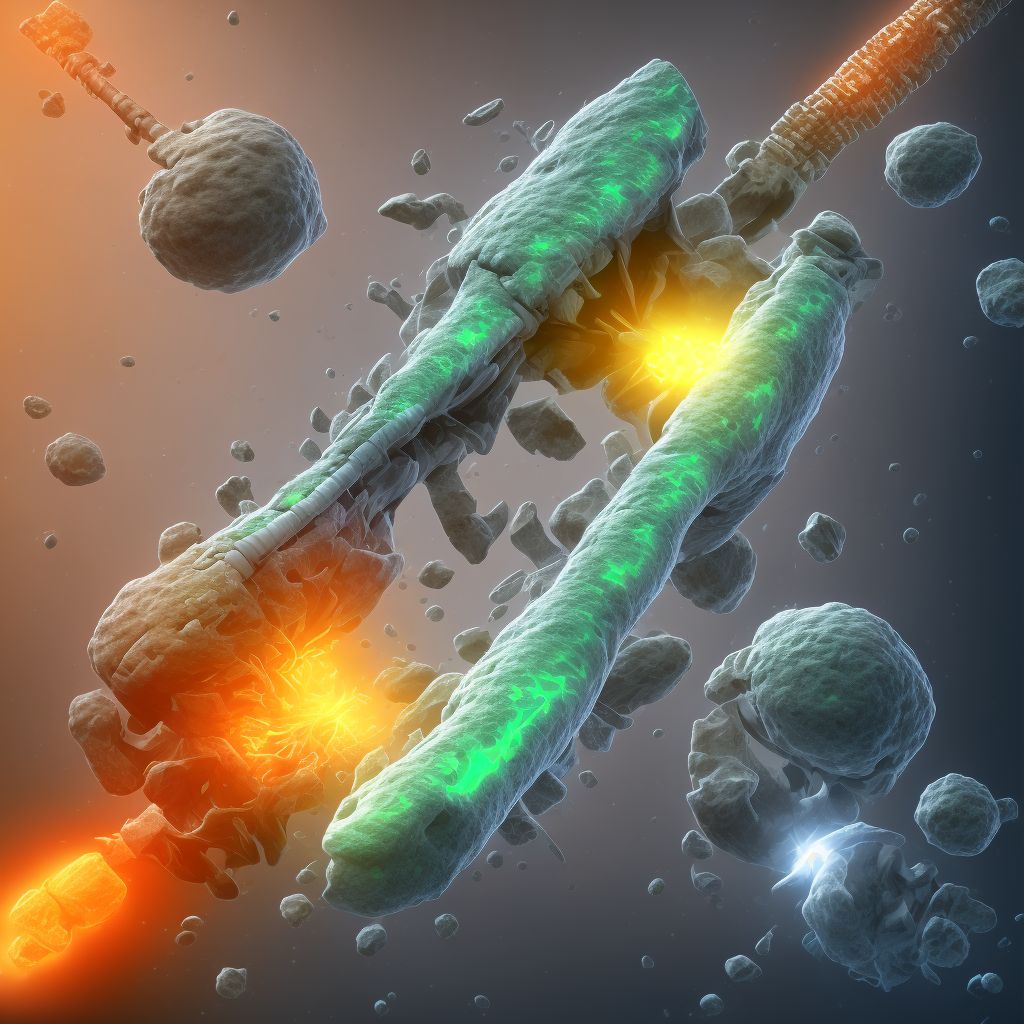
Nondisplaced segmental fracture of shaft of unspecified tibia, subsequent encounter for open fracture type I or II with nonunion Save
ICD-10 code: S82.266M
Disease category: S82.266: Nondisplaced segmental fracture of shaft of unspecified tibia
Nondisplaced Segmental Fracture of Shaft of Unspecified Tibia: Understanding the Subsequent Encounter for Open Fracture Type I or II with Nonunion
A nondisplaced segmental fracture of the shaft of the unspecified tibia can be a complicated injury that requires subsequent medical attention. In some cases, this fracture may progress to an open fracture type I or II with nonunion, which necessitates further evaluation and care. While treatment options are not discussed in this article, it is important to understand the nature of this injury and the significance of subsequent encounters.
When a nondisplaced segmental fracture occurs in the shaft of the tibia, it means that the bone has broken into multiple fragments but remains in its original position. The exact cause of this type of fracture can vary, ranging from sports injuries to traumatic accidents. Nondisplaced fractures are often less severe than displaced fractures, as the bone fragments maintain alignment.
However, if left untreated or improperly managed, a nondisplaced segmental fracture can progress to an open fracture type I or II. An open fracture refers to a situation where the bone breaks through the skin, exposing it to the external environment. Open fractures are classified into different types based on the severity of soft tissue damage and the degree of contamination.
When a subsequent encounter occurs for an open fracture type I or II with nonunion, it means that the fracture has not healed properly, resulting in a nonunion. Nonunion refers to the failure of bone fragments to heal together within the expected timeframe. This can be caused by various factors, such as poor blood supply, infection, or inadequate stability.
To address this complex condition, medical professionals will perform a thorough evaluation during the subsequent encounter. This may involve further imaging tests, such as X-rays or MRIs, to assess the extent of the nonunion and identify any associated complications. Based on the findings, the healthcare team can develop a comprehensive treatment plan tailored to the patient's specific needs.
- Understanding the nature of the nondisplaced segmental fracture
- Progression to open fracture type I or II
- Exploring nonunion as a result of inadequate healing
- The significance of subsequent encounters for evaluation and care
While this article focuses on providing an overview of a nondisplaced segmental fracture of the shaft of the unspecified tibia and subsequent encounters for open fracture type I or II with nonunion, it is crucial to consult with a healthcare professional for personalized guidance and treatment options. Remember, early intervention and proper management are key to ensuring optimal recovery.
Treatment of Nondisplaced segmental fracture of shaft of unspecified tibia, subsequent encounter for open fracture type I or II with nonunion:
Treatment Options for Nondisplaced Segmental Fracture of Shaft of Unspecified Tibia, Subsequent Encounter for Open Fracture Type I or II with Nonunion
Dealing with a nondisplaced segmental fracture of the shaft of an unspecified tibia can be challenging, especially when it progresses to an open fracture type I or II with nonunion. However, there are several treatment options availa...
To see full information about treatment please Sign up or Log in